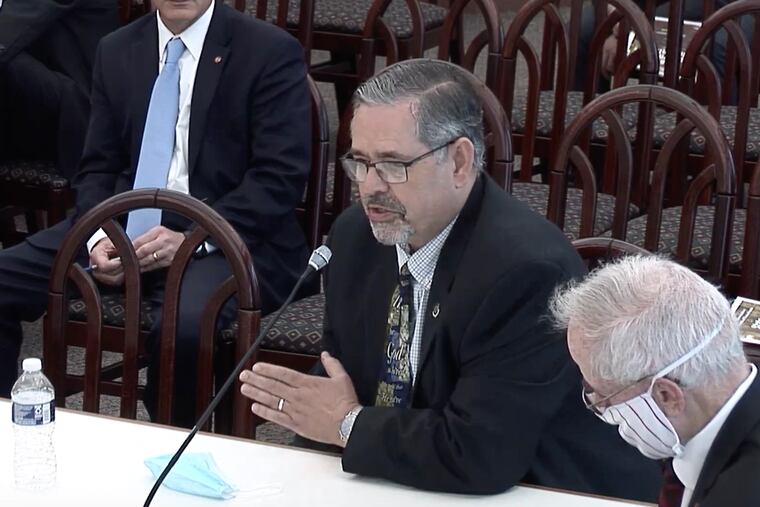Pennsylvania’s new congressional and legislative maps may come too late for the 2022 primary
The delay in getting census data from the 2020 count could result in rescheduling the 2022 spring primary.

HARRISBURG — Pennsylvania lawmakers worried about the delay in census results were told Wednesday it may be May 2022 before the next set of district lines for Congress and the legislature are hammered out.
The delay in getting data from the 2020 count could result in rescheduling the 2022 spring primary, currently planned for May 17. Candidates need to know the district lines in order to circulate petitions to get on the primary ballot.
“I find it rather astonishing that the more capabilities we have with computers to process stuff quickly, everything becomes so much more complex,” Sen. Cris Dush (R., Indiana) said during the joint hearing of the House and Senate state government committees. “When we were promised in this age of the computer that things would get much more simple.”
Brent McClintock, head of the Legislative Data Processing Center, told lawmakers that if the U.S. Census Bureau lives up to its recent projection that it will provide the requisite data to states by Sept. 30. If the process plays out similarly to what occurred in 2011, then McClintock's agency can get the numbers into shape for the mapmakers to finish their jobs sometime around May 2022.
The largely pandemic-caused delays have led some states to seek ways around deadlines to produce new maps, said Wendy Underhill, the elections and redistricting program executive director at the National Conference of State Legislatures.
She said some states may start drawing maps with other data, then fine-tune them after census data arrives. Others may draw maps without census data, expecting a lawsuit, then revise them with the official numbers that would presumably make litigation moot, she said.
In the meantime, Underhill said, states can get a handle on their demographic changes, survey incumbents about their priorities and gather input from the public.
Census Bureau official James Whitehorne expressed confidence that the new Sept. 30 deadline will be met.
“We feel that this is a really solid production schedule that is based on the long-standing expertise that the Census Bureau and staff have,” Whitehorne told the committees.
In Pennsylvania, which is likely to lose one of its 18 congressional seats to a faster-growing state, the congressional districts are drawn as regular legislation in the GOP-majority General Assembly, subject to approval by the Democratic governor.
The legislative map is produced by a five-member commission that includes the floor leaders of both parties in the House and Senate. Those four members choose the fifth, and if they cannot agree, that person is chosen by the state Supreme Court, currently with a 5-2 Democratic majority.
Democrats on the Pennsylvania Supreme Court took the dramatic action in early 2018 of throwing out the state’s nearly decade-old congressional maps, which had led to a durable 13-5 Republican tilt in the congressional delegation. The new maps produced a 9-9 tie between Republicans and Democrats, and all 18 incumbents ran for and won reelection in November.